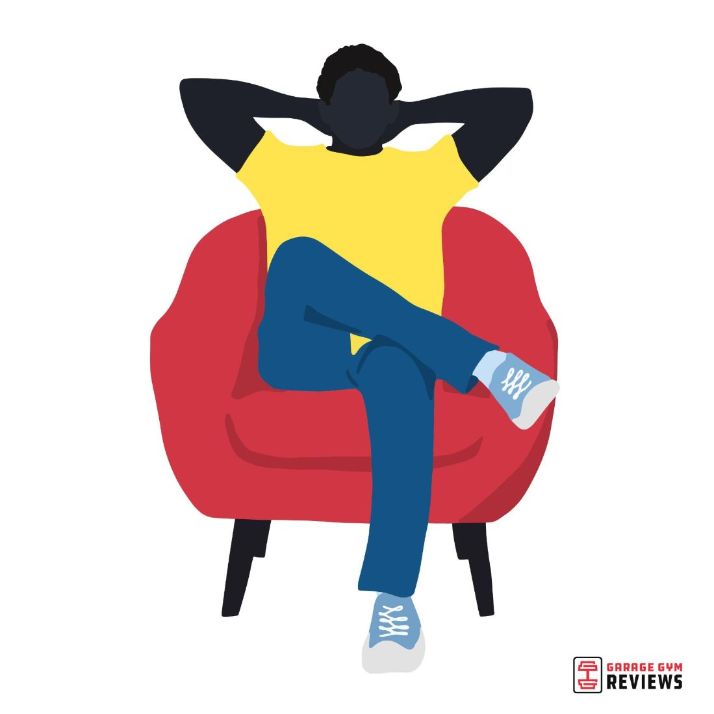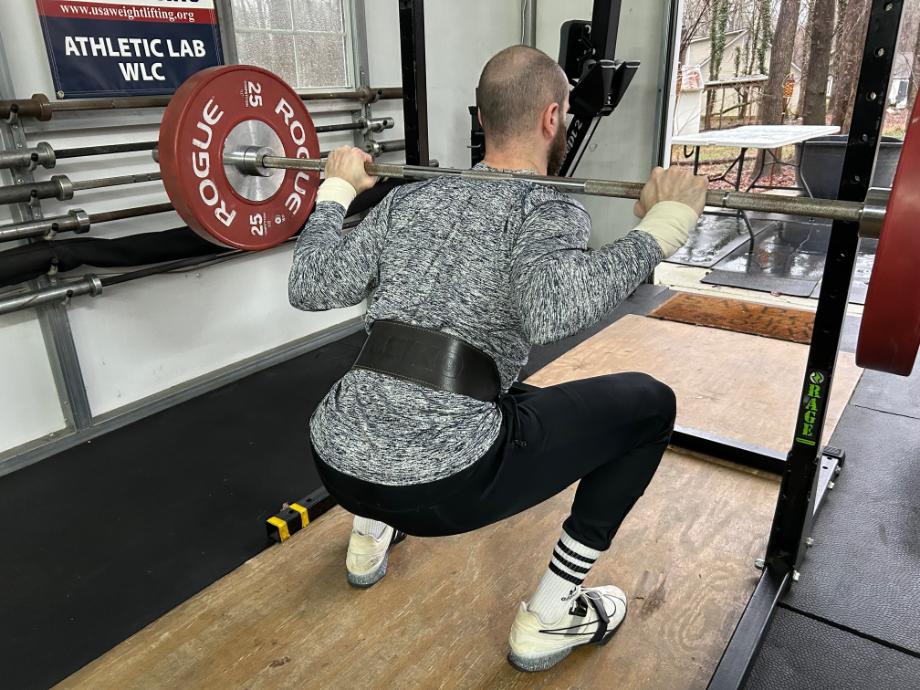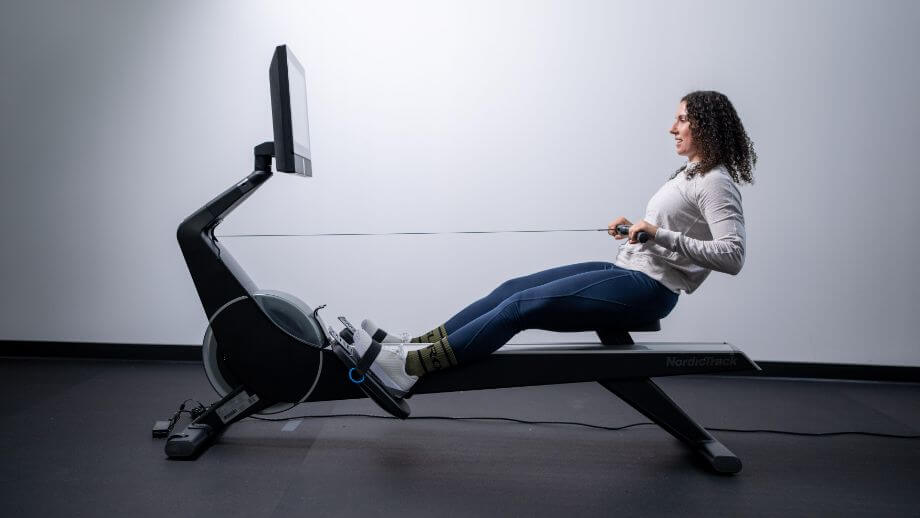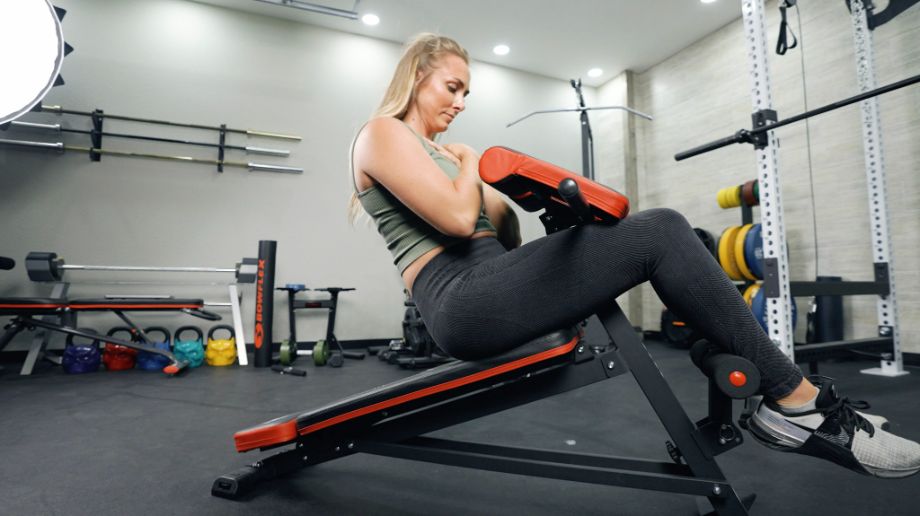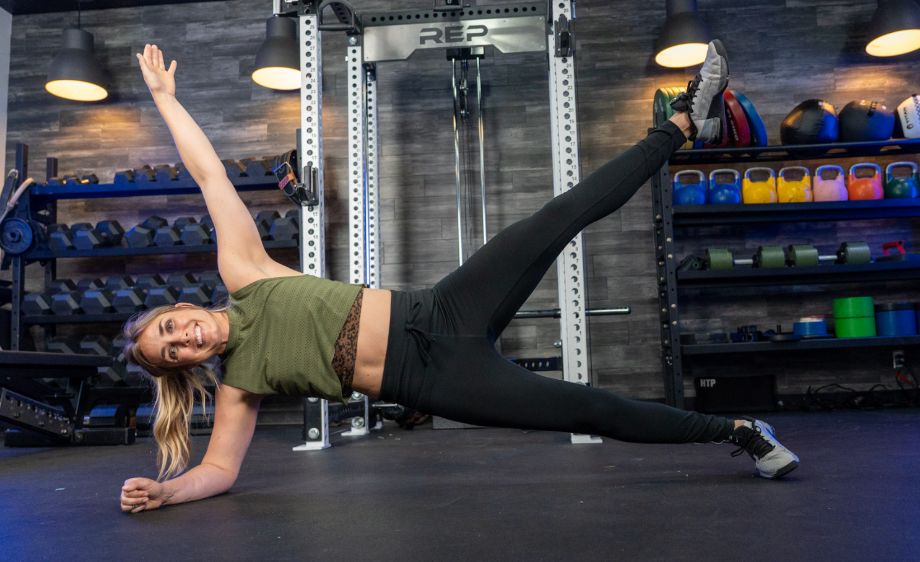You’ve likely heard that you should give yourself some time to recover after exercise. And that’s true. Recovery is just as important to your fitness goals as workouts themselves. But what is recovery, exactly?
There are different types: active recovery, passive recovery, and rest days. All of these can help improve your overall performance and the way your body feels, and each one has a place and time. Rest days are probably the most well-known, but what is active recovery? And how does it differ from passive recovery? We’re glad you asked.
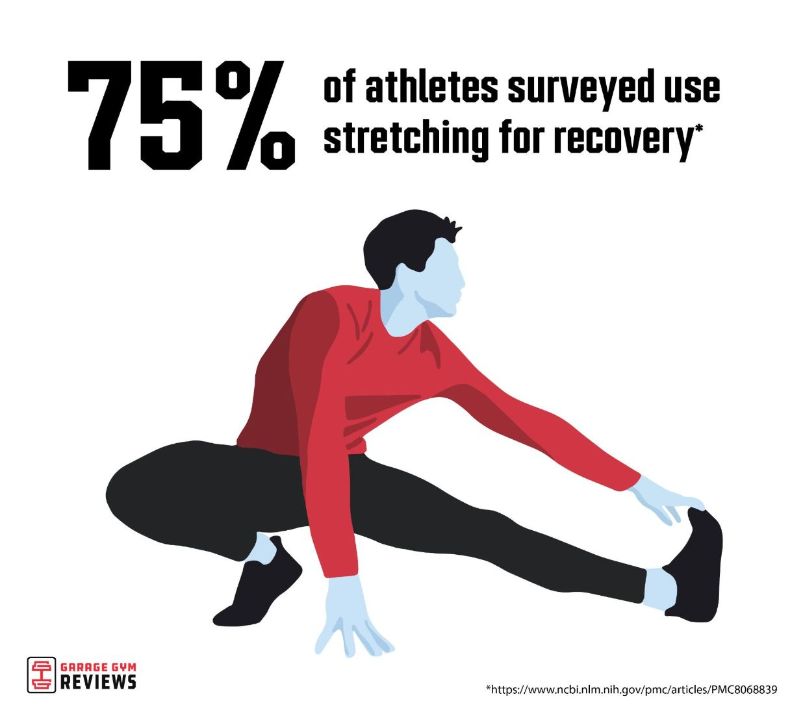
In this guide, we’ll define active recovery, go through some of its science-backed benefits, and give you examples of what types of movements fall under this umbrella. We’ll also compare active recovery to passive recovery, and make a case for why you should be doing both.
Defining Active Recovery
First, let’s define active recovery. Active recovery involves performing low-intensity exercise after high-intensity exercise. This is typically done as a type of rest day, but can be done in between sets or exercises, as well. The short-term goal with active recovery is to increase blood flow to your muscles and help push out toxins and metabolic byproducts, like lactate, that can build up and cause delayed-onset muscle soreness (DOMS). This can help you bounce back from a strenuous workout faster. The long-term goal with active recovery is to improve your athletic performance over time.
Benefits of Active Recovery
Active recovery has both short- and long-term benefits. In one study published in BMC Sports Science Medicine and Rehabilitation1, researchers compared active recovery to passive recovery in between resistance training sets. The active recovery group performed seven repetitions (reps) in a 30-second window in between sets, while the passive recovery group just rested.
While both groups saw significant improvements in C-reactive protein (a measure of inflammation) and blood lactate, the active recovery group had more significant increases in growth hormone, upper-body muscle endurance, and lower-body one-rep max (1RM)—all things that can contribute to building muscle and strength over time.
In another study published in Frontiers in Physiology2, researchers found that active recovery could elicit small to large decreases in delayed-onset muscle soreness (DOMS) and reduce specific markers of muscle damage and inflammation, like creatine kinase (CK) and C-reactive protein (CRP).
One more study in the Journal of Strength and Conditioning3 reported that active recovery may help improve endurance adaptations like VO2 max and overall power in sprinters. This was a small study, so it’s not totally conclusive, but is insightful nonetheless.
Any type of active recovery can help. But one study in PLOS One4 found that 20 minutes of post-exercise active recovery using the same main muscle groups that you used during the actual exercise may be more effective in fatigue recovery. For example, after leg day, a light walk may be more beneficial than other forms of recovery; after arm day, you might want to do a yoga sequence that involves the upper body.
Types of Active Recovery
Now that you know what active recovery is and how it can benefit you, let’s get into the types of active recovery workouts.
Walking
Walking is one of the easiest and most accessible active recovery exercises you can do. Walking increases blood flow and can help reduce stiffness following an intense workout. And studies show that it can help clear out blood lactate5 to a greater degree than passive recovery after short-duration high-intensity activity.
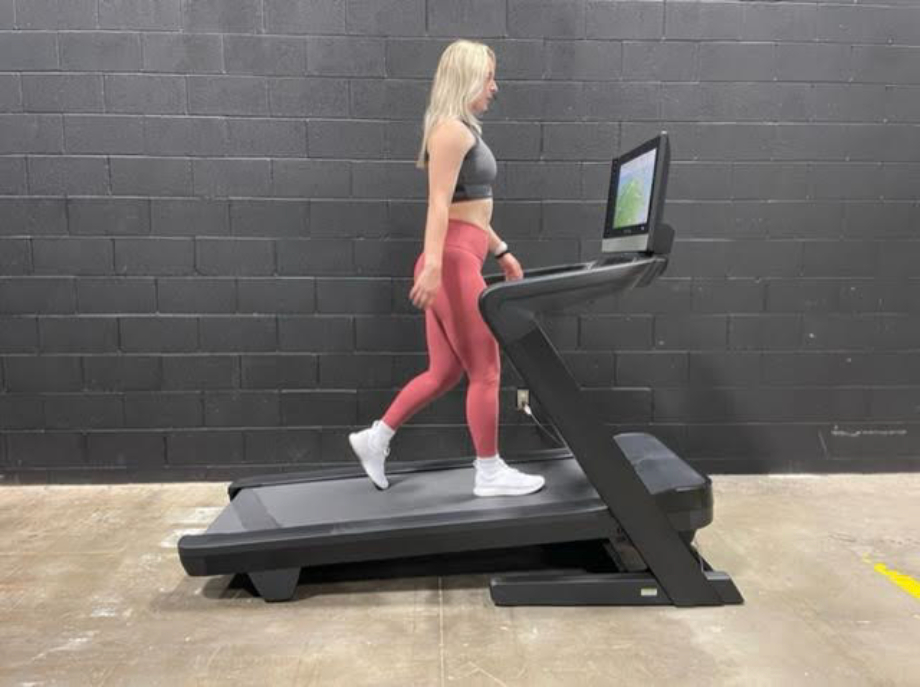
Swimming
Swimming is another low-impact exercise that works well as a form of active recovery. Swimming can help reduce inflammation, but it has unique benefits beyond that, too. The hydrostatic pressure and buoyancy help with overall recovery and stimulate the metabolic and neuromuscular systems6, which can lead to adaptations that may improve athletic performance.
One study published in the International Journal of Sports Medicine7 found that a swimming-based recovery session could improve exercise performance the next day.
Cycling
Cycling is another good option, but you have to be really mindful of your intensity here. “Instead of following along with a tough workout on the Peloton app, keep it low intensity by doing a steady-state cardio ride that doesn’t raise your heart rate to more than 30-60% of its max,” says Amanda Capritto, a certified personal trainer and GGR editor.
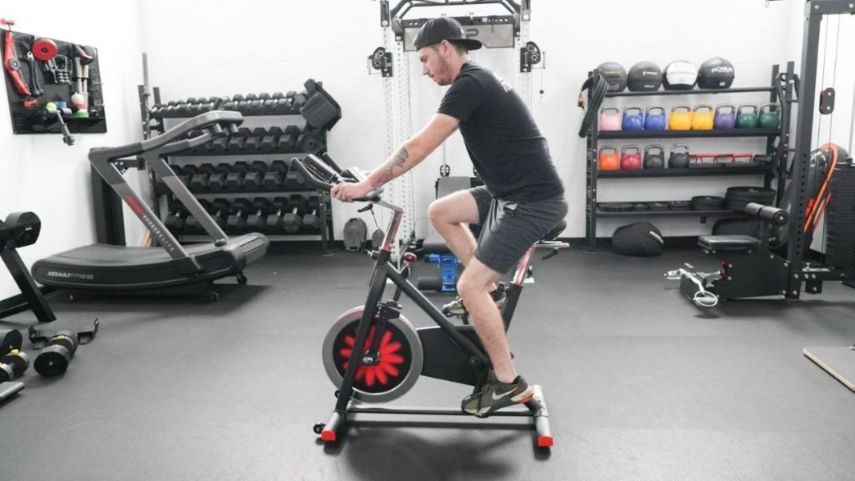
Stretching
Stretching is an easy way to get your body moving without a ton of effort. While the science is a little unsettled on this, some research8 shows that stretching may improve range of motion and flexibility, decrease muscle tension, and increase circulation. There are some flaws in these studies (for example, really small sample sizes), but the bottom line is that stretching feels good. If you want to use it as part of your active recovery, then we’re all for it.
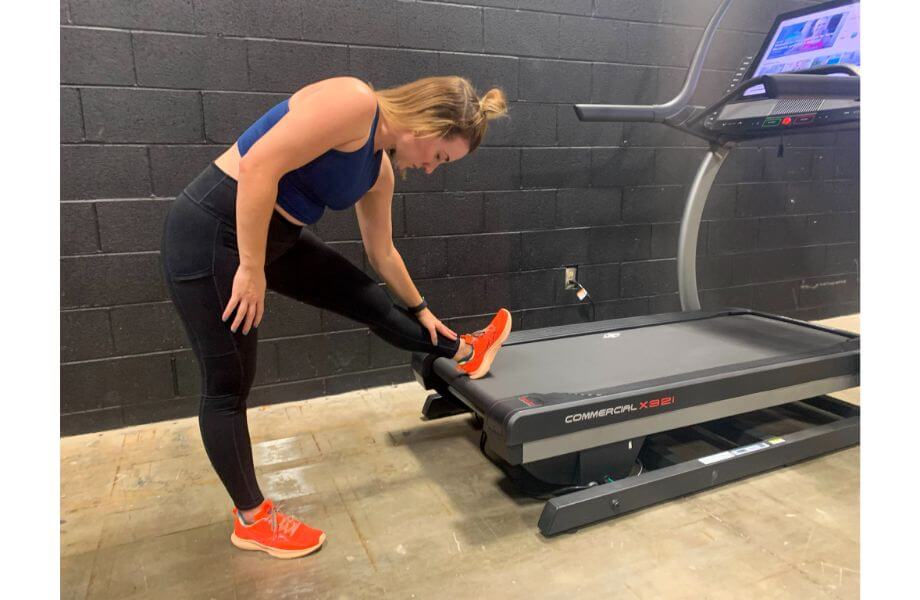
Foam Rolling
Foam rolling can reduce muscle stiffness, increase range of motion, and reduce DOMS, which can all help optimize recovery after intense training. According to a review in the Journal of Bodywork and Movement Therapies9, it may work best when combined with dynamic stretching and a pre-workout warm-up.
RELATED: Best Pre-Workout
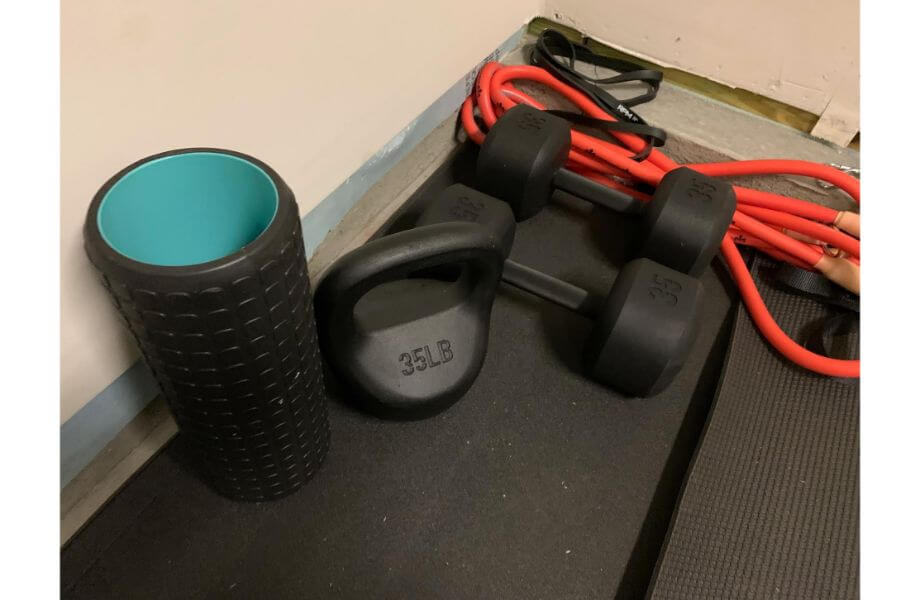
Yoga
Yoga has a ton of benefits. It can lower your resting heart rate10, increase endurance, and improve maximum oxygen uptake during exercise. It also has a direct effect on recovery. In one study in the Journal of Strength and Conditioning11, researchers tested muscle soreness in a group of women (both beginners and experienced yogis) after an eccentric strength training session. They found that even one round of yoga could significantly lessen muscle soreness.
Yoga may also improve balance and mobility12, which can have a positive effect on your overall performance and quality of life.
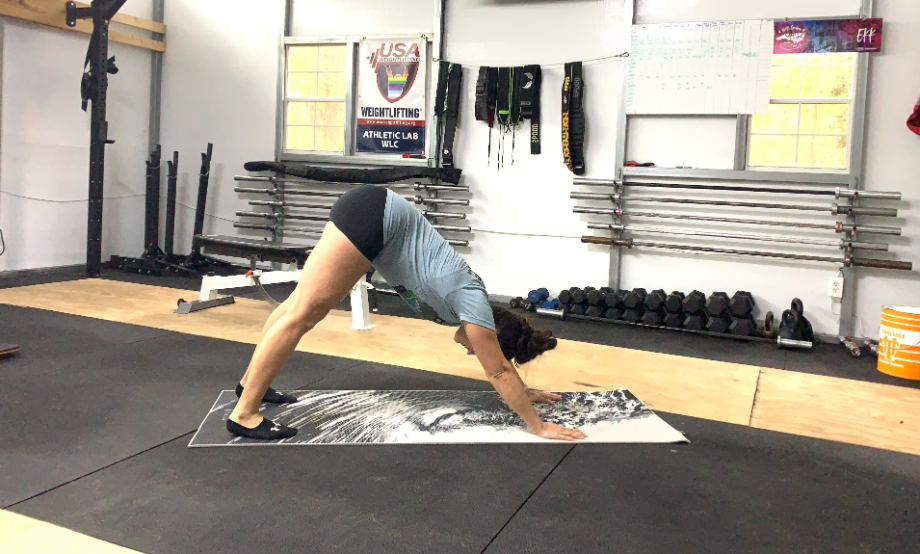
When to Do Active Recovery Exercises
There are three times you might want to do active recovery exercises: in between workout sets or intervals, after an intense workout (aka, as your cool-down period), and/or in between heavy workout days.
In Between Workout Sets Or Intervals
This might look like taking a few strides on the treadmill or doing a few yoga poses in between lifting sets instead of sitting down and scrolling through Instagram. It can also mean coming to a walking pace between sprints during high-intensity interval training instead of stopping completely.
After An Intense Workout
When you’re done with your main workout, you can use active recovery—like walking or slowly cycling—to bring your heart rate down and help return your body to homeostasis. “Typically 10 to 15 minutes is enough,” says Amanda.
In Between Heavy Workout Days
If you want to go for a leisurely walk or do a yoga class on your rest day, this counts as active recovery, too. We want to be very clear here, though—active recovery should not necessarily take the place of a true rest day.
Most of the studies on active recovery were done on exercise days, like in between sets or intervals or after a workout. And there’s plenty of research to back up the fact that your body needs real rest.
Who Should Do Active Recovery?
Everyone should incorporate active recovery, no matter your fitness level. “That’s not to say that you shouldn’t be taking complete rest days, but walking for 10 minutes after a running high-intensity interval training (HIIT) workout or using a foam roller before you go to bed at night can make a huge difference in how you feel, and how well you bounce back,” Amanda says.
Active Recovery vs Passive Recovery
On the other end of the spectrum, we have passive recovery. The American Council on Exercise (ACE)13 defines passive recovery as “stillness and inactivity.” Basically, you let your body recover by doing absolutely nothing, or by engaging in therapeutic modalities, like massage and heat therapy, that don’t require any real effort from you.
Types of Passive Recovery
Doing nothing is probably the most obvious type of passive recovery, but there are other forms too, like cryotherapy, heat therapy, and massage.
Complete Rest
Complete rest (aka doing absolutely nothing) is the holy grail of passive recovery. When we say “rest day,” we literally mean just vegging out on the couch and reading a book or watching TV.
Cryotherapy
Cryotherapy means exposing your body to very cold temperatures. This could be as simple as putting an ice pack on sore muscles, or as intense as a whole-body cryotherapy session or a cold plunge in an ice bath. Ice is often used to help with injuries from overtraining, but a cryotherapy recovery session can help reduce inflammation14, soreness, and pain and help with muscle recovery even in the absence of pain.
Heat Therapy
The sauna, steam room, and heating pads are all forms of heat therapy, which can help reduce DOMS, especially when applied right after physical activity15 (but there are benefits within 24 hours, too). There’s also some research16 that shows that using the sauna can help with muscle recovery following endurance and/or strength training sessions.
Massage
Massages can help speed up muscle recovery by increasing blood flow (and oxygen) to your muscles and reducing lactic acid buildup. This can also help with DOMS and post-workout muscle fatigue. Massage could mean a professional session with a massage therapist or self-myofascial release at home with a massage gun.
Final Thoughts: What Is Active Recovery?
Active recovery involves doing a low-intensity exercise after a strenuous workout. It’s a way to let your body rest (and your muscles recover) without coming to a complete halt. You can do it in between sets, after a workout, and/or on a planned rest day. But to be clear, it should be part of an overall recovery plan that also includes some days of just completely vegging out.
Q&A: What Is Active Recovery?
What should I do on rest days?
It’s largely up to you. While active recovery has its place, we’re big proponents of fully resting and getting through that Netflix queue on your rest days. If you decide you want to move your body, you can go for a walk, take a leisurely bike ride, do a yoga flow, or bust out some stretching.
How many rest days should I take?
There isn’t a strict rule for everyone. “The number of rest days you need really depends on your training intensity, but in general, you should aim for at least one to two days to give your body and muscles some time to recover,” certified personal trainer Amanda Capritto says.
What is an example of active recovery?
Walking, swimming, cycling, stretching, foam rolling, and yoga are all examples of active recovery. But really, anything that gets your body moving and keeps your heart rate at about 30-60% of your maximum heart rate counts. You don’t have to do structured movement—you can do something fun, like dancing or a casual Pickleball game, too.
Is a full rest day or active recovery better?
We are big proponents of taking full rest days when you need them, but active recovery days can be beneficial, too. For example, going for a leisurely walk on a rest day can have mental health benefits that make it worthwhile. One isn’t necessarily better than the other, it’s really ideal to work both in. For example, you may choose to incorporate active recovery by going for a 15-minute walk after a really intense lifting session, then taking the next day as a rest day.
How long should you do active recovery?
It depends how you’re using it. If you’re incorporating active recovery exercise as a cool down, 10 to 15 minutes is probably enough. If you’re doing active recovery on your rest day, you may want to do some light activity for 30 minutes or so.
References
- Fekri-Kourabbaslou, V, Shams, S, Amani-Shalamzari, S. Effect of different recovery modes during resistance training with blood flow restriction on hormonal levels and performance in young men: a randomized controlled trial BMC Sports Sci Med Rehabil. 2022;14(1):47. doi:10.1186/s13102-022-00442-0
- Dupuy, O, Douzi, W, Theurot, D, Bosquet, L, Dugué, B. An evidence-based approach for choosing post-exercise recovery techniques to reduce markers of muscle damage, soreness, fatigue, and inflammation: a systematic review with meta-analysis. Front Physiol. 2018;9:403. Published 2018 Apr 26. doi:10.3389/fphys.2018.00403
- Yamagishi, T, Babraj, J. Active recovery induces greater endurance adaptations when performing sprint interval training. J Strength Cond Res. 2019;33(4):922-930. doi:10.1519/JSC.0000000000002787
- Mika, A, Oleksy, Ł, Kielnar, R, et al. Comparison of two different modes of active recovery on muscles performance after fatiguing exercise in mountain canoeist and football players. PLoS One. 2016;11(10):e0164216. doi:10.1371/journal.pone.0164216
- Draper, Nick et al. Effects of active recovery on lactate concentration, heart rate and RPE in climbing. Journal Sports Sci Med. 2006;5(1)97-105.
- Torres-Ronda, L, Del Alcázar, XS. The properties of water and their applications for training. J Hum Kinet. 2014;44:237-248. Published 2014 Dec 30. doi:10.2478/hukin-2014-0129
- Lum, D, Landers, G, Peeling, P. Effects of a recovery swim on subsequent running performance. Int J Sports Med. 2010;31(1):26-30. doi:10.1055/s-0029-1239498
- Nakamura, K, Kodama, T, Mukaino, Y. Effects of active individual muscle stretching on muscle function. J Phys Ther Sci. 2014;26(3):341-344. doi:10.1589/jpts.26.341
- Hendricks, S, Hill, H, Hollander, SD, Lombard, W, Parker, R. Effects of foam rolling on performance and recovery: A systematic review of the literature to guide practitioners on the use of foam rolling. J Bodyw Mov Ther. 2020;24(2):151-174. doi:10.1016/j.jbmt.2019.10.019
- Woodyard, C. Exploring the therapeutic effects of yoga and its ability to increase quality of life. Int J Yoga. 2011;4(2):49-54. doi:10.4103/0973-6131.85485
- Boyle, CA, Sayers, SP, Jensen, BE, Headley, SA, Manos, TM. The effects of yoga training and a single bout of yoga on delayed onset muscle soreness in the lower extremity. J Strength Cond Res. 2004;18(4):723-729. doi:10.1519/14723.1
- Youkhana, S, Dean, CM, Wolff, M, Sherrington, C, Tiedemann, A. Yoga-based exercise improves balance and mobility in people aged 60 and over: a systematic review and meta-analysis. Age Ageing. 2016;45(1):21-29. doi:10.1093/ageing/afv175
- American Council on Exercise. Passive vs. active recovery: which is more effective?
- Lombardi, G, Ziemann, E, Banfi, G. Whole-body cryotherapy in athletes: from therapy to stimulation. An updated review of the literature. Front Physiol. 2017;8:258. doi:10.3389/fphys.2017.00258
- Petrofsky, J, Berk, L, Bains, G, Khowailed, IA, Lee, H, Laymon, M. The efficacy of sustained heat treatment on delayed-onset muscle soreness. Clin J Sport Med. 2017;27(4):329-337. doi:10.1097/JSM.0000000000000375
- Mero, A, Tornberg, J, Mäntykoski, M, Puurtinen R. Effects of far-infrared sauna bathing on recovery from strength and endurance training sessions in men. Springerplus. 2015;4:321. doi:10.1186/s40064-015-1093-5


